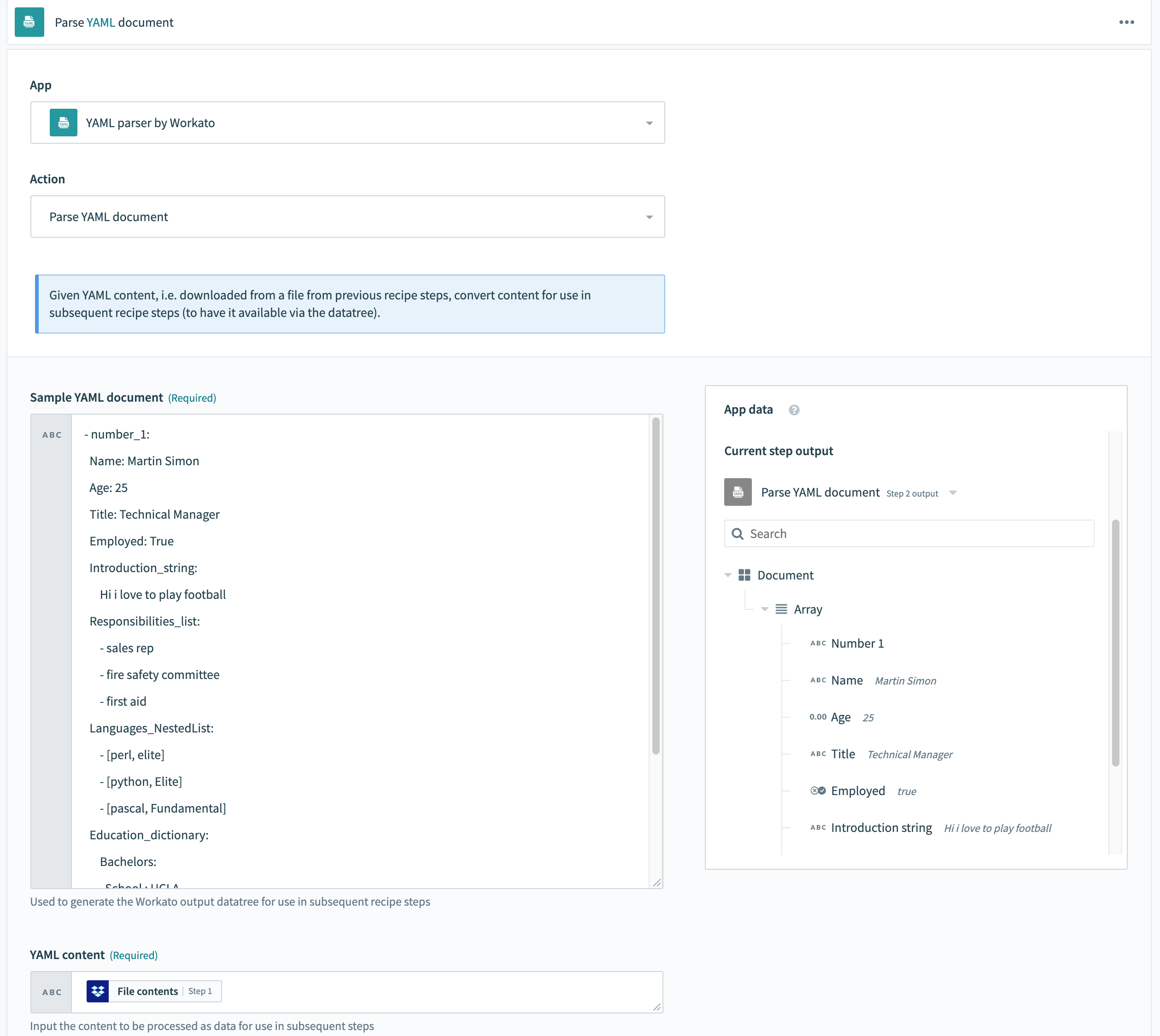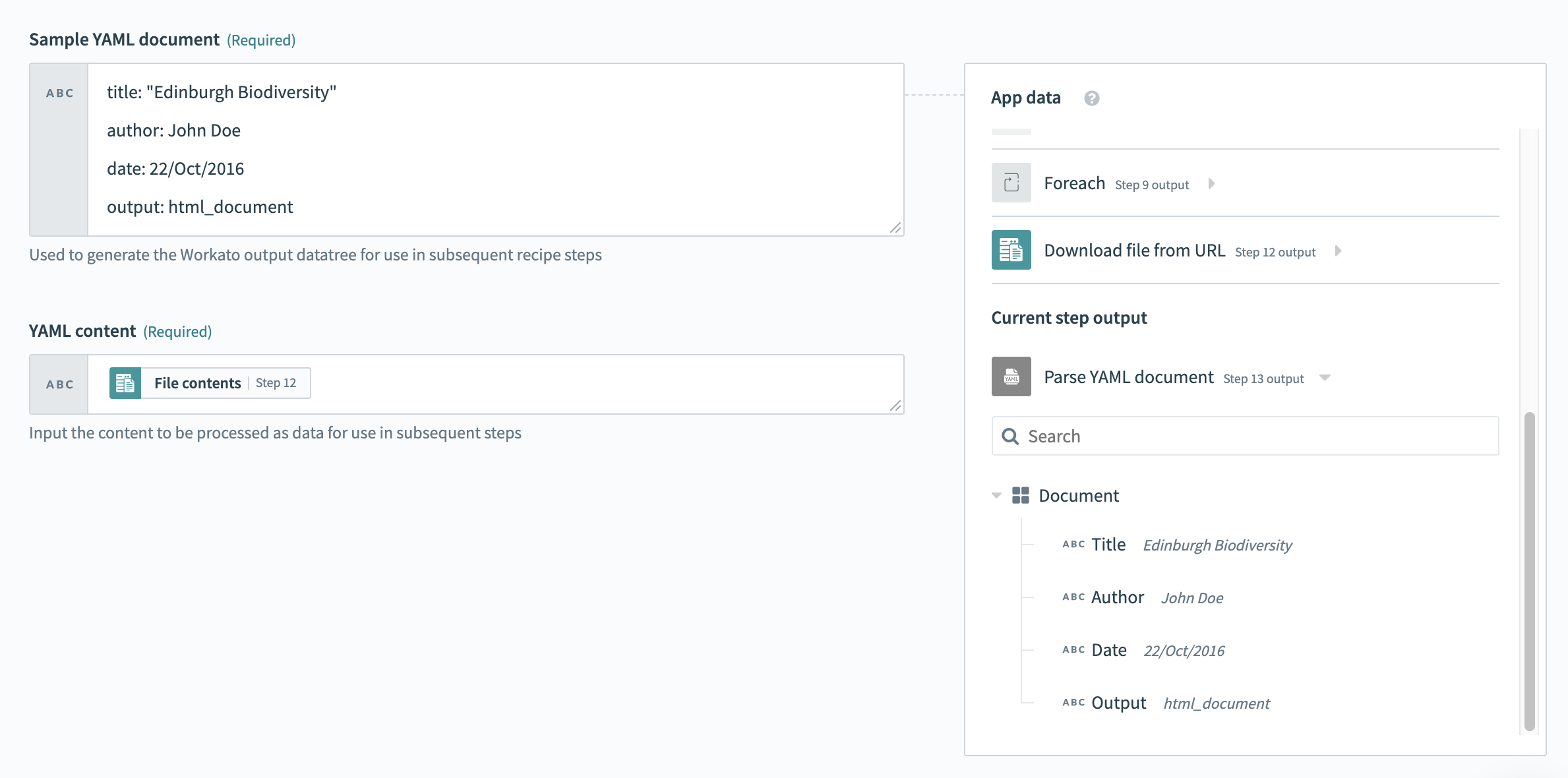# Handling YAML
YAML is a data serialization format that is written in a human-readable language. It stores data as key:value pairs in a variety of data types. YAML files are an easy way to store, update, and retrieve data that everyone can understand.
We will go through an example of sieving through a YAML file and retrieving the relevant data. We will be using a sample YAML file of Employee information.
- employee_1:
Name: Martin Simon
Age: 25
Title: Technical Manager
Employed: True
Introduction_string:
Hi i love to play football
Responsibilities_list:
- sales rep
- fire safety committee
- first aid
Languages_NestedList:
- [perl, elite]
- [python, Elite]
- [pascal, Fundamental]
Education_dictionary:
Bachelors:
School : UCLA
Degree : BSc in IoT
GPA : 4.3
PostGrad:
School : MIT
Degree : PhD in CS
GPA : 4.2
# YAML parser by Workato
Convert YAML content into usable datapills with the built-in YAML parser. YAML parser by Workato is a native application that does not require any connection setup.
Select App > YAML parser by Workato to get started.
This parser requires you to download the YAML file on to Workato beforehand. You can do so with a connector's built-in download action (for example, Dropbox) or with File by Workato.
 Parse YAML content. See the sample recipe here (opens new window).
Parse YAML content. See the sample recipe here (opens new window).
# Input fields
| Input field | Description |
|---|---|
| Sample YAML document | The YAML schema of your document. This is used to generate outputs in the datatree. |
| YAML content | The file to be parsed. |
# Output fields
Datapills will be generated according to the format defined in the Sample YAML document. In our example, an array output is generated, with simple datapills (name and title) and arrays (responsibilities list) and nested objects (languages nested list).
# Working with YAML content
Beside formatting entire files in YAML, it is common to use YAML headers for other file formats. They commonly store metadata like titles, authors, and date.
YAML parser by Workato will read through the content between the ---...--- boundaries and return them as datapills. All other file content will be ignored.
For example, you may store YAML in a HTML file:
---
title: "Edinburgh Biodiversity"
author: John Doe
date: 22/Oct/2016
output: html_document
---
The recipe will return datapills only for the YAML specified in the action.
 Parse YAML content in other file types
Parse YAML content in other file types
Last updated: 3/29/2023, 2:00:59 PM